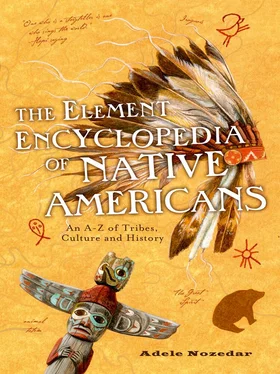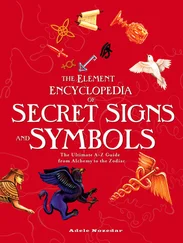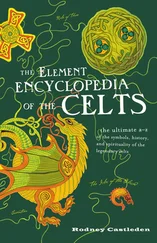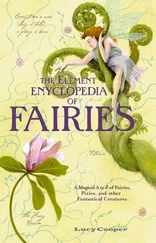In the meantime, the Anasazi people—otherwise known as “The Ancient Ones”—arose to the north of Hohokam territory. They further developed effective systems of irrigation, and farmed maize and cotton, learning along the way to weave the cotton crop into a useful fabric.
There were three crops that were fundamental to the Native American, and their cultivation was developed and refined by the invention of a method that was a superb example of what we call “sustainable farming” these days. The “Three Sisters” in question were corn, beans, and squash.
According to an Iroquoismyth, these three plants were three sisters, also known as Deohako, who had been gifted to mankind by the Great Spirit. The Three Sisters thrive best in each other’s company, and another of their names reflects this: collectively they were referred to as “Our Sustainers.” The planting of the Three Sisters was accompanied by songs and ceremonies, the three seeds being planted together in the same mound of soil. Each of these plants not only supplies a healthy diet but, as the unused parts are plowed back in, adds nutrients to the soil. The first crop of green cornis still celebrated with festivals and dancing.
The symbiosis between the three plants has a wonderful logic. The corn—growing straight and strong—provides a “pole” of support for the bean plants to scramble up toward the sun. These beans have the additional benefit of helping to fix nitrogen into the soil, which further fertilizes the ground. The vines of the bean also strengthen the corn stalks, making them less liable to wind damage. Thirdly, the squash—which have shallow roots—not only act as a mulch, covering the ground and suppressing weeds, but also help keep the soil moist. Squash plants with spiny skins also help to deter any predators. At the end of the harvest, the debris of leaves and stalks left by all three plants would be dug back into the soil, enriching it even further.
As well as growing beautifully together, the nutritional value of the Three Sisters complement one another perfectly, too. The beans, when dried, not only provide protein but can be stored against the winter. The corn is starchy and full of carbohydrates, providing energy. The squash not only contains vitamins but its seeds yield a useful oil.
Native Americans invented this system with no knowledge of vitamins, nitrogen-fixing capabilities, or any of the technical information that we know of today. Further, the natural world, it was believed, offered up signs that the time had come either to plant the seeds or to harvest the crop. For example, the return of the Canada Geese signaled the time for planting the corn.
Originally from the Aleutian Islands, which extend in a westerly direction from Alaska for a distance of about 1,200 miles to the Pacific Ocean, the name Aleut is believed to mean either “Island” or, alternatively, “Bald Rock,” from a Russian word. “Alaska” is from an Aleutian phrase meaning “mainland.”
Aleut culture was very similar to that of the Inuit. Both peoples belong to what is termed the Arctic Culture Area. Their livelihood was based almost entirely on the ocean: they hunted sea mammals, such as otters and whales, and fished, using the traditional baidarkas —a kayak-like vessel made from waterproofed oiled sealskins stretched over a wooden frame. Much of the hunting for larger sea mammals was carried out using a harpoon. The Aleut seafood diet was supplemented with seasonal berries, fruits, and roots. Aleuts lived in partially buried homes called barabaras—large buildings shared by a number of families. Beautiful, intricately decorated baskets were made from the rye grass growing along the edges of the beaches. Shells and amber were used as currency.
In such a harsh climate, the Aleuts had to be particularly ingenious about keeping warm. Their clothing was generally double-layered to preserve heat, made from animal hides and also animal guts. It is the Aleuts that we have to thank for the parka—the long, hooded coat that is worn all over the world.
The coming of the Europeans and their involvement in the fur trade had a significant impact on the traditional Aleut way of life. The first explorer, Vitus Bering of Denmark, working under the auspices of the Russian Czar Peter the Great, arrived on the Aleutian Islands in 1741. His reports of the rich sealife and opportunities for fur trading soon saw a large contingent of prospectors from Siberia arriving in the area. Their methods of working were harsh for the Aleuts. Arriving in a village, hostages were captured, primarily women and children. The men were then forced to trade furs in return for the safe return of their families. The women and children were used as slaves, forced to skin the animals and clean the furs. The Aleuts rebelled in 1761 and succeeded in killing a group of traders; however, the Russians responded by sending in a veritable armada of warships, and blasted many Aleut villages to smithereens with their cannons.
Thereafter, the Russians made some attempts to regulate the fur trade and to treat the Aleuts and the Inuit more fairly, including actually paying them for their efforts. This just meant that the traders found new ways to cheat the Aleut, inventing charges such as fees for food and transportation. The end of the 18th century saw the founding of the Russian American Company, a massive fur-trading company which would become the main competitor with the British Hudson Bay Company.
The collective grouped under the Algonquian banner lived primarily in and around the woodlands of northeastern America. The different Native peoples belonging to this family included the Abenaki, Wampanoag, Mohegan and Narragansett, the Mahican, Lenni Lenape, the Powhatan and Roanoke, the Ojibweand Ottawa, the Shawneeand Illinois, the Sauk and Fox, Kickapoo, the Mi’kmaq, Cree, Montagnais, and Naskapi, as well as many others.
There are of course differences in the lifestyles and histories of all the Algonquian peoples, which were banded together far more loosely than the Iroquois Confederacy, but still tended to come together to support one another during times of war or hardship. The tribes also tended to live grouped into small villages, typically living in wigwams. As well as tending their crops of corn, beans, and squash, the tribes hunted small game, fished, and foraged for various wild plants and roots. The peoples who lived close to the prairies where the buffaloroamed, for example in the Mississippi River Valley, would also have hunted the buffalo.
This is also known as The Dawes Act, after Senator Henry Dawes of Massachusetts, who was its main proponent. Passed in 1887, the Act gave the President of the United States the right to audit all the lands that belonged to the Native American peoples, and then, where necessary, divide that land into smaller pieces for individual tribes. The overarching aim of the Act was to aid the assimilationof Native Americans into the white majority; individual ownership of land was perceived to be of paramount importance in facilitating this aim. The European sensibility placed a lot of importance on land and property ownership, while this was not a primary concern of the Native peoples, who believed that the land belonged to everyone. As well as apportioning parcels of land, the Act enabled the Government to buy any “excess” land from the Native Americans, and then apportion that land to others—primarily, white settlers.
Читать дальше












